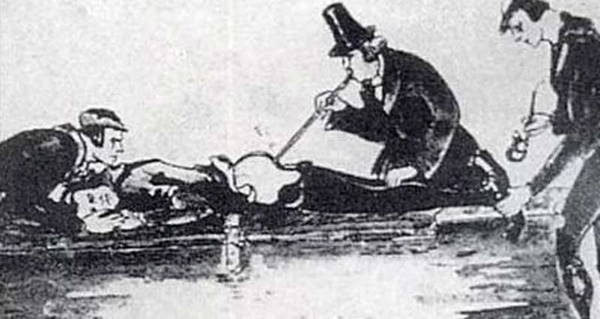1/23: One #startup trap to avoid (founders and VCs) is to fall in love with a value prop that can’t be delivered IRL now. Good diligence will surface disconnects but they’re often brushed under the rug by #VCs who believe fixing delivery over time will be fine. Unpacked:
More from Startup
>> How To Start a Lead Gen Agency <<
This step-by-step process will help you sign $5K - $20K clients in NO TIME.
Learn how to:
✅ Find Leads
✅ Book Meetings
✅ Sign Clients
✅ Scale Processes
// 𝐓𝐇𝐑𝐄𝐀𝐃 //

1/ Make sure you understand the lead gen process.
You NEED to know your shit before you pitch ANYTHING.
A few services you can offer to generate leads:
> Cold email
> LinkedIn outreach
> Facebook ads
> SEO
The list goes on.
Just perfect one of them & you’re SOLID.
2/ Find a niche to pitch your services to.
NICHE DOWN.
Use this doc to find an “untapped” niche:
https://t.co/aYptSNsZw6
I’d suggest choosing 1-3 to start with.
& focus ONLY on these.
3/ Find leads for outreach:
Sign up for a free @IcyLeads account at https://t.co/mz2kYnEko1 to find key decision-maker contact emails for outreach.
You can find emails from the list of niches provided above & filter out job titles such as:
> CEO
> Founder
> Marketing
Etc.
4/ Once you have a list of leads to pitch your services to:
It’s time to write your cold email outreach sequences.
Your cold emails should speak DIRECTLY to the prospect you’re reaching out to.
You can find some winning cold email templates
This step-by-step process will help you sign $5K - $20K clients in NO TIME.
Learn how to:
✅ Find Leads
✅ Book Meetings
✅ Sign Clients
✅ Scale Processes
// 𝐓𝐇𝐑𝐄𝐀𝐃 //

1/ Make sure you understand the lead gen process.
You NEED to know your shit before you pitch ANYTHING.
A few services you can offer to generate leads:
> Cold email
> LinkedIn outreach
> Facebook ads
> SEO
The list goes on.
Just perfect one of them & you’re SOLID.
2/ Find a niche to pitch your services to.
NICHE DOWN.
Use this doc to find an “untapped” niche:
https://t.co/aYptSNsZw6
I’d suggest choosing 1-3 to start with.
& focus ONLY on these.
3/ Find leads for outreach:
Sign up for a free @IcyLeads account at https://t.co/mz2kYnEko1 to find key decision-maker contact emails for outreach.
You can find emails from the list of niches provided above & filter out job titles such as:
> CEO
> Founder
> Marketing
Etc.
4/ Once you have a list of leads to pitch your services to:
It’s time to write your cold email outreach sequences.
Your cold emails should speak DIRECTLY to the prospect you’re reaching out to.
You can find some winning cold email templates
I just gave a talk to the W2021 YC batch. It's my favorite startup audience to talk to. Here are some of the highlights:
Finding product market fit is the critical thing to do in a startup.
Everything else: demo day, what investors you get, how much you raise, what press covers you -- it is all window dressing.
Many founders don’t want to talk to their customers because it makes them vulnerable, because it's hard work, because it's scary. Creating a tight feedback loop with customers is the one thing that will help you discover PMF.
If a customer isn't one of your cofounders, try to create a customer panel that allows as tight of a loop as possible. Call them daily. Put them in your Slack.
My Twitch cofounder Emmett Shear has a great analogy on PMF here: it's like rolling a boulder downhill.
Finding product market fit is the critical thing to do in a startup.
Everything else: demo day, what investors you get, how much you raise, what press covers you -- it is all window dressing.
Many founders don’t want to talk to their customers because it makes them vulnerable, because it's hard work, because it's scary. Creating a tight feedback loop with customers is the one thing that will help you discover PMF.
If a customer isn't one of your cofounders, try to create a customer panel that allows as tight of a loop as possible. Call them daily. Put them in your Slack.
My Twitch cofounder Emmett Shear has a great analogy on PMF here: it's like rolling a boulder downhill.
1/ What is \u201cproduct/market fit\u201d? I\u2019m not sure I can give you a definition. But maybe I can share what the subjective difference is in how it feels when you have it and when you don\u2019t. Founding a startup is deciding to take on the burden of Sisyphus: pushing a boulder up a hill.
— Emmett Shear (@eshear) July 27, 2019
How to build a $100/day digital side hustle.
A dead simple guide to get you started:
Since 2020, I've:
• Built an online audience of 80k+
• Sold $150k+ in digital products
• Secured $50k+ in contracts
• Generated 100M+ views
It all helped me build a side hustle that allowed me to leave my 9-5.
If I had to start from scratch, here's what I would do:
1. Find your "niche-of-one"
This is found at the intersection of:
• What you're good at
• What is already popular
• What is currently profitable
The three ingredients of a profitable, money-making side hustle.
2. Start on Twitter
Why?
Twitter is the best audience building platform because:
• You can DM creators
• You can collect rapid data
• You can quickly execute on publishing
• You can mix short and long form content
(And we'll leverage the content later)
3. "Borrow" your core audience
Most people:
• Publish into the void
• Purchase shares & retweets
• Join expensive engagement groups
To grow in the beginning.
There's another way...
The "Waffle House Marketing Strategy"
Check it out:
A dead simple guide to get you started:
Since 2020, I've:
• Built an online audience of 80k+
• Sold $150k+ in digital products
• Secured $50k+ in contracts
• Generated 100M+ views
It all helped me build a side hustle that allowed me to leave my 9-5.
If I had to start from scratch, here's what I would do:
1. Find your "niche-of-one"
This is found at the intersection of:
• What you're good at
• What is already popular
• What is currently profitable
The three ingredients of a profitable, money-making side hustle.
2. Start on Twitter
Why?
Twitter is the best audience building platform because:
• You can DM creators
• You can collect rapid data
• You can quickly execute on publishing
• You can mix short and long form content
(And we'll leverage the content later)
3. "Borrow" your core audience
Most people:
• Publish into the void
• Purchase shares & retweets
• Join expensive engagement groups
To grow in the beginning.
There's another way...
The "Waffle House Marketing Strategy"
Check it out:
In January of 2022, I started Twitter at zero
— Jon Brosio (@jonbrosio) April 2, 2022
As of April 1, I'm currently at:
\u2022 435 followers
\u2022 $500+ a month
\u2022 183k monthly views
What's my secret?
The "Waffle House Marketing Strategy"
99% of people are unaware of this predictable and repeatable growth technique \U0001f447
You May Also Like
To people who are under the impression that you can get rich quickly by working on an app, here are the stats for https://t.co/az8F12pf02
📈 ~12000 vistis
☑️ 109 transactions
💰 353€ profit (285 after tax)
I have spent 1.5 months on this app. You can make more $ in 2 days.
🤷♂️

I'm still happy that I launched a paid app bcs it involved extra work:
- backend for processing payments (+ permissions, webhooks, etc)
- integration with payment processor
- UI for license activation in Electron
- machine activation limit
- autoupdates
- mailgun emails
etc.
These things seemed super scary at first. I always thought it was way too much work and something would break. But I'm glad I persisted. So far the only problem I have is that mailgun is not delivering the license keys to certain domains like https://t.co/6Bqn0FUYXo etc. 👌
omg I just realized that me . com is an Apple domain, of course something wouldn't work with these dicks
📈 ~12000 vistis
☑️ 109 transactions
💰 353€ profit (285 after tax)
I have spent 1.5 months on this app. You can make more $ in 2 days.
🤷♂️

I'm still happy that I launched a paid app bcs it involved extra work:
- backend for processing payments (+ permissions, webhooks, etc)
- integration with payment processor
- UI for license activation in Electron
- machine activation limit
- autoupdates
- mailgun emails
etc.
These things seemed super scary at first. I always thought it was way too much work and something would break. But I'm glad I persisted. So far the only problem I have is that mailgun is not delivering the license keys to certain domains like https://t.co/6Bqn0FUYXo etc. 👌
omg I just realized that me . com is an Apple domain, of course something wouldn't work with these dicks
A brief analysis and comparison of the CSS for Twitter's PWA vs Twitter's legacy desktop website. The difference is dramatic and I'll touch on some reasons why.
Legacy site *downloads* ~630 KB CSS per theme and writing direction.
6,769 rules
9,252 selectors
16.7k declarations
3,370 unique declarations
44 media queries
36 unique colors
50 unique background colors
46 unique font sizes
39 unique z-indices
https://t.co/qyl4Bt1i5x

PWA *incrementally generates* ~30 KB CSS that handles all themes and writing directions.
735 rules
740 selectors
757 declarations
730 unique declarations
0 media queries
11 unique colors
32 unique background colors
15 unique font sizes
7 unique z-indices
https://t.co/w7oNG5KUkJ

The legacy site's CSS is what happens when hundreds of people directly write CSS over many years. Specificity wars, redundancy, a house of cards that can't be fixed. The result is extremely inefficient and error-prone styling that punishes users and developers.
The PWA's CSS is generated on-demand by a JS framework that manages styles and outputs "atomic CSS". The framework can enforce strict constraints and perform optimisations, which is why the CSS is so much smaller and safer. Style conflicts and unbounded CSS growth are avoided.
Legacy site *downloads* ~630 KB CSS per theme and writing direction.
6,769 rules
9,252 selectors
16.7k declarations
3,370 unique declarations
44 media queries
36 unique colors
50 unique background colors
46 unique font sizes
39 unique z-indices
https://t.co/qyl4Bt1i5x

PWA *incrementally generates* ~30 KB CSS that handles all themes and writing directions.
735 rules
740 selectors
757 declarations
730 unique declarations
0 media queries
11 unique colors
32 unique background colors
15 unique font sizes
7 unique z-indices
https://t.co/w7oNG5KUkJ

The legacy site's CSS is what happens when hundreds of people directly write CSS over many years. Specificity wars, redundancy, a house of cards that can't be fixed. The result is extremely inefficient and error-prone styling that punishes users and developers.
The PWA's CSS is generated on-demand by a JS framework that manages styles and outputs "atomic CSS". The framework can enforce strict constraints and perform optimisations, which is why the CSS is so much smaller and safer. Style conflicts and unbounded CSS growth are avoided.












